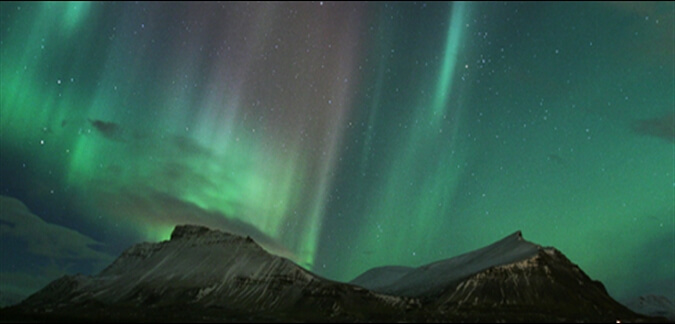
Overview:
Experience the best Iceland’s nature has to offer and find yourself being an adventurer and explorer during the fascinating Nordic wintertime. Hot springs, spouting geysers, powerful waterfalls, glittering glaciers, black lava beaches, soothing Blue Lagoon and dancing Northern Lights are all good enough reasons for visiting Iceland in winter.
Holiday price is from £ 1,135 per person based on availability and two people sharing a standard twin/double room at a centrally located 3* hotel. Single supplement and hotel upgrades upon request.
*** during Christmas, New Year and public holidays, prices will start from £ 1,595 per person based on availability and 2 persons sharing a standard twin/double room at a centrally located 3* hotel. ***
Special Offer!
At these uncertain times we understand that flexibility is important, and we want to give you the
chance to plan with confidence. We want to offer you the option to change or cancel your holiday
with fully refundable deposit.
Terms & Conditions:
- Special Offer applies to new bookings for Northern Lights Norway Short Break made by 30 th
June 2020 (should we include starting date, date when newsletter will be published?), for
departures from 16 th August 2020 to 9 th September 2021.
- Special offer includes flights with Wizz Air from London Luton Airport.
- Our standard terms and conditions will apply once the final balance payment is due (10
weeks before departure).
Departure Dates:
SEASON
|
DEPARTURE |
RETURN |
| All Year* |
Daily |
Daily |
* Please note that the holiday can be arranged all year around but the Northern Lights season is on from the 23rd August until 15th April.
Tour Itinerary:
Day 1: Arrival & Transfer from Keflavik Airport to Reykjavik
Upon arrival in Keflavik airport, a shuttle bus will transfer you to your hotel.
Day 2: Golden Circle & Northern Lights Hunt
This tour takes you to some “must see” sights of Iceland. Drive around the fertile lowlands of Southern Iceland and visit one of Iceland’s most magnificent waterfalls, Gullfoss, the erupting hot springs in the Geysir area (not everyone realizes that the word geysir, meaning a hot spring is originally an Icelandic word) and the outstandingly beautiful Þingvellir National Park where the world’s oldest parliament was founded in the year 930. Included in the tour is a visit to the Geysir museum. In the evening we take you on a guided northern lights hunt, also known as the Aurora Borealis, that is a spectacular natural phenomenon, often seen dancing around in fantastic colours across the Icelandic Arctic sky. The locations visited are different every tour since we go where it’s most likely that we will see the Northern Lights. This tour is dependent on weather and sightings are not guaranteed. If you don’t see it today, you will get a free tour next day.
Day 3: South Coast
This tour is ideal for nature lovers of all kinds. You will have an opportunity to stand behind the plummeting Seljalandsfoss waterfall, walk up to the Skógafoss waterfall and gaze at the formations. We travel along the South Coast of Iceland as far as Vík í Mýrdal, a small, charming village surrounded by beautiful high bird cliffs. Here you also get the possibility to visit a local wool factory and outlet store. Highlights of the day are stunning views of glaciers, waterfalls, black lava sand coast lines and impressive rock formations. In the tiny village of Skógar we visit one of Iceland’s most beautiful folk museums with turf houses.
Day 4: Blue Lagoon & Reykjavík
We depart at 10:00 for a bus tour to the Blue Lagoon. We drive through rough lava fields to visit the Blue Lagoon where you can relax in its rejuvenating geothermal water. The water is naturally very rich in minerals that are believed to have healing powers. You can stay as long as you wish (the last bus back to Reykjavik is at 21:00). The afternoon is free to explore Reykjavik, Iceland’s capital, or to enjoy optional spa treatments at the Blue Lagoon.
Day 5: Departure from Reykjavik
Breakfast at the hotel and, if time permits, explore more of the Icelandic capital before a transfer back to Keflavik airport. Return flight.
Package Includes:
- Direct return flights from London Heathrow, Gatwick, Luton, Manchester, Bristol, Edinburgh or Glasgow to Reykjavik (Other UK airports upon request)
- 1 piece of check-in luggage per traveler
- Return airport transfers in Reykjavik
- 4 nights' accommodation in a centrally located 3* hotel
- Breakfast daily
- 8 hours guided Golden Circle Tour from 09:00-17:00
- 3 hours guided Evening Northern Lights Hunt
- 10 hours guided South Coast Tour from 09:00-19:00
- Entrance to Geysir Museum and Skógar Folk Museum with turf houses
- Bus Reykjavik-Blue Lagoon-Reykjavik including admission to Blue Lagoon
- 24 hour emergency service
- ATOL protection
Enquire now »